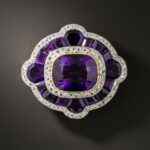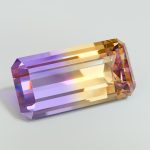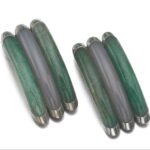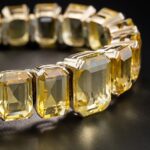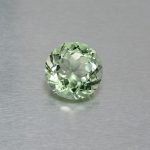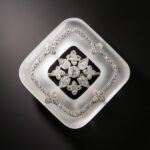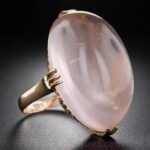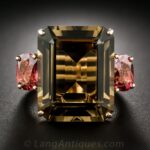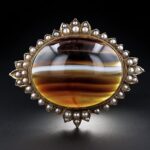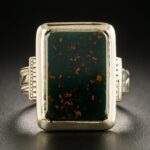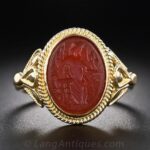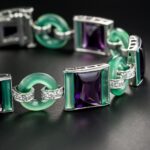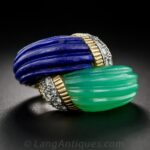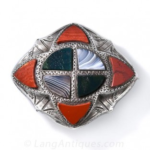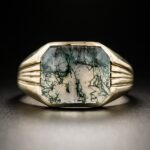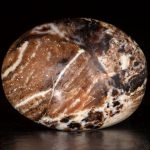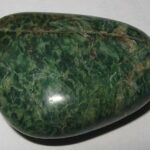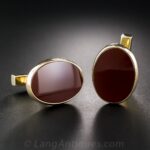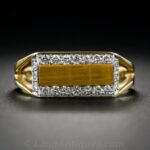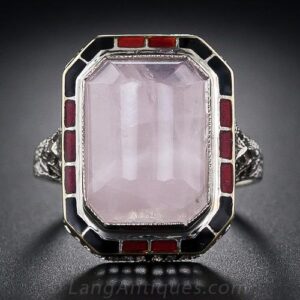
Quartz is a commonly occurring variety of silicon dioxide. It often crystallizes into well-formed hexagonal prisms. Quartz occurs in many colors, purple amethyst, pink rose quartz, yellow citrine, and a smoky variety, referred to as smoky quartz. The colorless, transparent crystals represent the modern concept of “crystal”. Crystal balls with mystic significance are made from quartz.
A Brief History of Quartz
Examples of rock crystal objects date back to 75, 000BC. They are the earliest talismans known to man. Every civilization has attributed magical powers to quartz crystals. To the ancient Japanese it symbolized faith, perseverance, infinity, and purity. Crystal balls were brought to Europe from the Near East by the Crusaders who credited them with the ability to cure diseases.
Ancient priests would use quartz crystals to light alter fires by focusing sunlight through the crystals. Quartz-focused sunlight was also used for cauterizing wounds.
Roman ladies often carried quartz balls for both medicinal purposes and to cool their hands-on warm days.
The name, quartz, comes from the Greek word, krustallos, which means ice. It’s often referred to, as the ice of the Gods and it was believed that one could quench their thirst by holding a quartz crystal in their mouth.
Types of Quartz
Quartz is one of the most abundant minerals on earth and has been used as a gemstone for as long as mankind can remember. It occurs in many forms and colors but is colorless when pure which makes it an allochromatic gemstone. In order to shed some light on the different varieties, the quartz group is usually divided into two: the monocrystalline varieties and the polycrystalline varieties. To find out more about a specific member of the quartz group click on its name or image:
Monocrystalline Quartz
Polycrystalline Quartz
Gems & Gemology: The Quarterly Journal of The Gemological Institute of America.
Quartz:
- Winter 1939, Quartz, by Braggs, p. 58, 1p.
- Spring 1940, p. 79, 2pp.
- Summer 1940, p. 87, 2pp.
- Fall 1949, Aventurine Quartz, by Webster, p. 208, 4pp.
- Winter 1949, Amethyst Color Induced in Rock Crystal via Cyclotron, p. 255, 1p.
- Fall 1950, Quartz from Montezuma, Brazil, Turns Green Upon Heating, p. 346, 1p.
- Winter 1950, Synthesis of Quartz Crystals, p. 359, 3pp.
- Spring 1952, The Synthesis of Quartz, p. 151, 3pp.
- Winter 1954, X-Ray Study of Fibrous Chalcedony (Iridescent Agate), p. 106, 3pp.
- Fall 1957, “Green” Amethyst From Four Peaks, Arizona, by Sinkankas, p. 88, 8pp.
- Summer 1960, A Citrine Triplet, p. 62, 1p.
- Spring 1961, Worm-Like Inclusions, that Grow, in Chalcedony, p. 151, 1p.
- Summer 1962, Quartz Triplets (Showing Absorption Spectrum), p. 307, 2pp.
- Summer 1963, Quartz Cat’s-Eyes, p. 43, 1p.
- Winter 1963, A Very Rare Star Amethyst, p. 101, 2pp.
- Summer 1964, Reported Excellent Chrysoprase of Australia Proves to be Dyed Chalcedony, p. 180, 1p.
- Fall 1964, Reported Excellent Chrysoprase of Australia Proves to be Dyed Chalcedony-Nomenclature, p. 216, 1p.
- Fall 1965, Marlborough Creek Chrysoprase of Australia, p. 323, 9pp.
- Winter 1966, Dyed Moss in Agate, p. 118, 2pp.
- Summer 1968, A 6-Rayed Star Quartz Cabochon with Cat’s-Eye on One Side, p. 313, 2pp.
- Summer 1968, Aventurine Quartz Inclusion, p. 315, 1p.
- Fall 1968, Spherulitic Inclusions in Chalcedony, p. 344, 2pp.
- Winter 1969, “Chrome Chrysoprase”-Jadeite-Like, p. 121, 2pp.
- Winter 1969, Synthetic Smoky Quartz, Blue Quartz, and Green Quartz from Russia, p. 129, 3pp.
- Spring 1970, Chrome Aventurine Quartz (Showing Absorption Spectrum), p. 158, 1p.
- Summer 1970, White Star Quartz, p. 194, 2pp.
- Summer 1971, Inclusions in Amethyst that Look Like Space Capsules, p. 322, 2pp.
- Fall 1971, Dyed Chalcedony-Excellent Jade Imitation (Showing Absorption Spectrum), p. 350, 1p.
- Spring 1972, Synthetic Quartz from Ohio, p. 8, 2pp.
- Summer 1972, A 20-Inch High Carved Rock Crystal Vase, p. 43, 1p.
- Fall 1972, An Odd 6-Rayed Star Quartz, p. 89, 2pp.
- Spring 1973, Moveable Bubbles in Quartz Crystals, p. 150, 2pp.
- Summer 1973, Fire Agate, p. 177, 1p.
- Summer 1973, Petrified Palm Root, p. 182, 2pp.
- Fall 1973, Fade Test on Gamma-Irradiated Quartz, p. 212, 2pp.
- Winter 1973, A Rock Crystal Brilliant with Tourmaline Needle Crystal Running from Culet to Center of Table, Creates Many Reflections, p. 235, 2pp.
- Winter 1973, Greenish-Yellow Citrine, Gamma-Irradiated (Test Available), p. 236, 2pp.
- Spring 1976, Jade-Like Quartz, p. 155, 2pp.
- Winter 1977, Imitation Bloodstone, p. 234, 1p.
- Winter 1977, Star Quartz and Banded Synthetic Quartz, p. 310, 3pp.
- Winter 1977, Another Multi-Star Quartz, p. 364, 2pp.
- Winter 1977, Synthetic Amethyst from Russia, p. 365, 2pp.
- Spring 1978, Inclusions in Agate and Their Origins and Significance, By Roger K. Pabian, p. 16, 12pp.
- Winter 1978, Star Quartz, p. 364, 2pp.
- Winter 1978, Synthetic Amethyst, p. 365, 2pp.
- Spring 1979, Fire Agates of Deer Creek, Arizona, by James L. Sweaney, p. 130, 13pp.
- Spring 1979, Synthetic Amethyst, Currently No Test for a Flawless Amethyst, p. 151, 3pp.
- Summer 1979, Quartz: Myth and Magic, Science and Sales, by Cheri Lesh, p. 174, 5pp.
- Summer 1980, Citrine-Amethyst Quartz – A Gemologically New Material, by John I. Koivula, p. 290, 4pp.
- Winter 1980, More News On Citrine-Amethyst Quartz, by John I. Koivula, p. 409, 1p.
